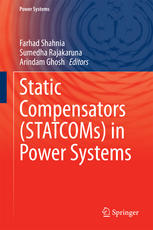

Most ebook files are in PDF format, so you can easily read them using various software such as Foxit Reader or directly on the Google Chrome browser.
Some ebook files are released by publishers in other formats such as .awz, .mobi, .epub, .fb2, etc. You may need to install specific software to read these formats on mobile/PC, such as Calibre.
Please read the tutorial at this link: https://ebookbell.com/faq
We offer FREE conversion to the popular formats you request; however, this may take some time. Therefore, right after payment, please email us, and we will try to provide the service as quickly as possible.
For some exceptional file formats or broken links (if any), please refrain from opening any disputes. Instead, email us first, and we will try to assist within a maximum of 6 hours.
EbookBell Team

0.0
0 reviewsA static compensator (STATCOM), also known as static synchronous compensator, is a member of the flexible alternating current transmission system (FACTS) devices. It is a power-electronics based regulating device which is composed of a voltage source converter (VSC) and is shunt-connected to alternating current electricity transmission and distribution networks. The voltage source is created from a DC capacitor and the STATCOM can exchange reactive power with the network. It can also supply some active power to the network, if a DC source of power is connected across the capacitor. A STATCOM is usually installed in the electric networks with poor power factor or poor voltage regulation to improve these problems. In addition, it is used to improve the voltage stability of a network.
This book covers STATCOMs from different aspects. Different converter topologies, output filters and modulation techniques utilized within STATCOMs are reviewed. Mathematical modeling of STATCOM is presented in detail and different STATCOM control strategies and algorithms are discussed. Modified load flow calculations for a power system in the presence of STATCOMs are presented. Several applications of STATCOMs in transmission and distribution networks are discussed in different examples and optimization techniques for defining the optimal location and ratings of the STATCOMs in power systems are reviewed. Finally, the performance of the network protection scheme in the presence of STATCOMs is described. This book will be an excellent resource for postgraduate students and researchers interested in grasping the knowledge on STATCOMs.